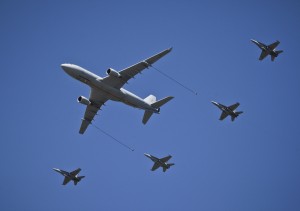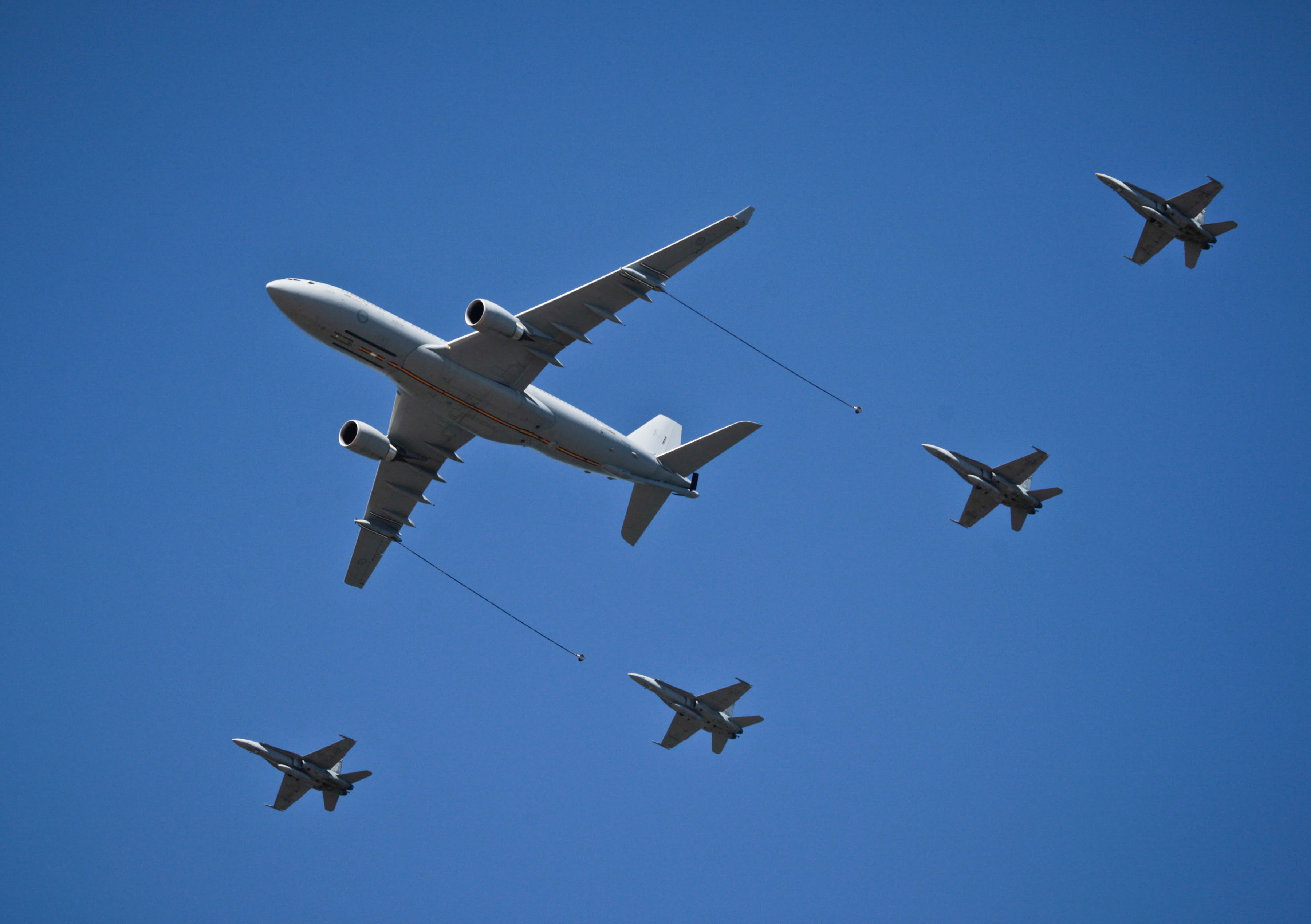2014-03-26 By Robbin Laird
Soon the USMC Darwin Rotational Force will come to Australia to train with the Australians.
What might not be as obvious as the images of the cross-training is the cross modernization of the two forces.
The Aussies are re-shaping their forces under the influence of new systems; and the Osprey-F-35B-CH-53K and other new systems are leading to the modernization of the USMC.
By using training ranges operating from Australia to the Mariana Islands to Guam, the Marines and the Aussies will shape common approaches built around the new systems.
They will obviously train with other Asian allies and the other US services as well, but shaping expeditionary capabilities through the Marine’s 10 year approach to a distributed laydown in the Pacific dovetails very nicely with the changes which the Aussies themselves are undertaking.
The Aussies are undergoing a significant air combat modernization process.
It began with the C-17, proceed with the acquisition of 5 new Airbus tankers (being joined by 6 being bought by Singapore), 5 new Wedgetail airborne early warning & control (AEW&C) aircraft, and then the F-35. The Wedgetail squadron is doing what no other air squadron has done to date: it is operating and leading the upgrade process of the world’s first software upgradeable aircraft. The F-35 is such an aircraft, and discussions with the squadron made it clear during a recent visit that they understand that they are spearheading a broader modernization process.
The Aussie navy has added new world leading radar systems on their frigates and is adding new amphibious ships as well as Aegis ships. And they are looking to integrate the Wedgetail and their F-35s with the fleet to meet the various challenges and threats in the region.

The final major piece to be added is the F-35. The F-35 is viewed by the Royal Australian Air Force (RAAF) as disruptive technology, which is embraced as such by the RAAF leadership. It is not just about doing things you can do now with a replacement aircraft; it is about doing things you can not do now with a transformational system.
The Aussie approach was discussed before, during and after a workshop held by The Williams Foundation on behalf of the Australian COS of the RAAF in mid-March at Canberra. The focus of the seminar was on Air Combat Operations: 2025 and Beyond. The core emphasis was on the impact of the F-35 on reshaping the Australian combat approach appropriate to the challenges, which Australia faced in the region and beyond.
The emphasis was on how to leverage fifth generation technology to generate ongoing air combat development in the decades ahead.
The Australian F-35 will enter into an environment of change and the central question addressed by the seminar was how to accelerate the kind of change necessary to deal with the threats and challenges in the neighborhood and beyond in the years ahead.
At the heart of the program were three speakers: SQNLDR Matthew Harper, No. 1 Squadron, Royal Australian Air Force, Lt. Col. Chip Berke and the VMX-22 Commander Mike Orr. The presence of the Marine aviators was a concrete manifestation of the cross-modernization opportunities.
These three operators addressed the question of what the fifth generation experience was all about and how that experience would affect the evolution of the force in the decade ahead. Having operators address the issue of transformation and transition really focused the audience, which included significant attendance by the next generation RAAF officers.
In an interview with Lt. General Robling, MARFORPAC Commander, he highlighted that the Aussies are a good example of an ally building out its capabilities as the US does so and working out a very interactive and mutually reinforcing defense structure.
He emphasized that the impact of a fleet of F-35s being shaped by Japanese, Singaporean, South Korean and Aussies with those of the USAF, USMC and USN will be a key element of shaping interactive capabilities.
“The two allies see a mutually beneficial relationship.
The intersection of Australian training ranges with those we are modernizing in Guam is a key element of working cross cutting modernizations.
This will allow us to work with a set of allies in the region as well within the Guam context to facilitate mutual modernizations of the allies as well.
We are not just building our bilateral relationships; we are facilitating multi-national collaboration AMONG our allies as well. This is a clear force multiplier.
In other words, the opportunity is not just for training but shaping relevant capabilities for 21st century operations.


